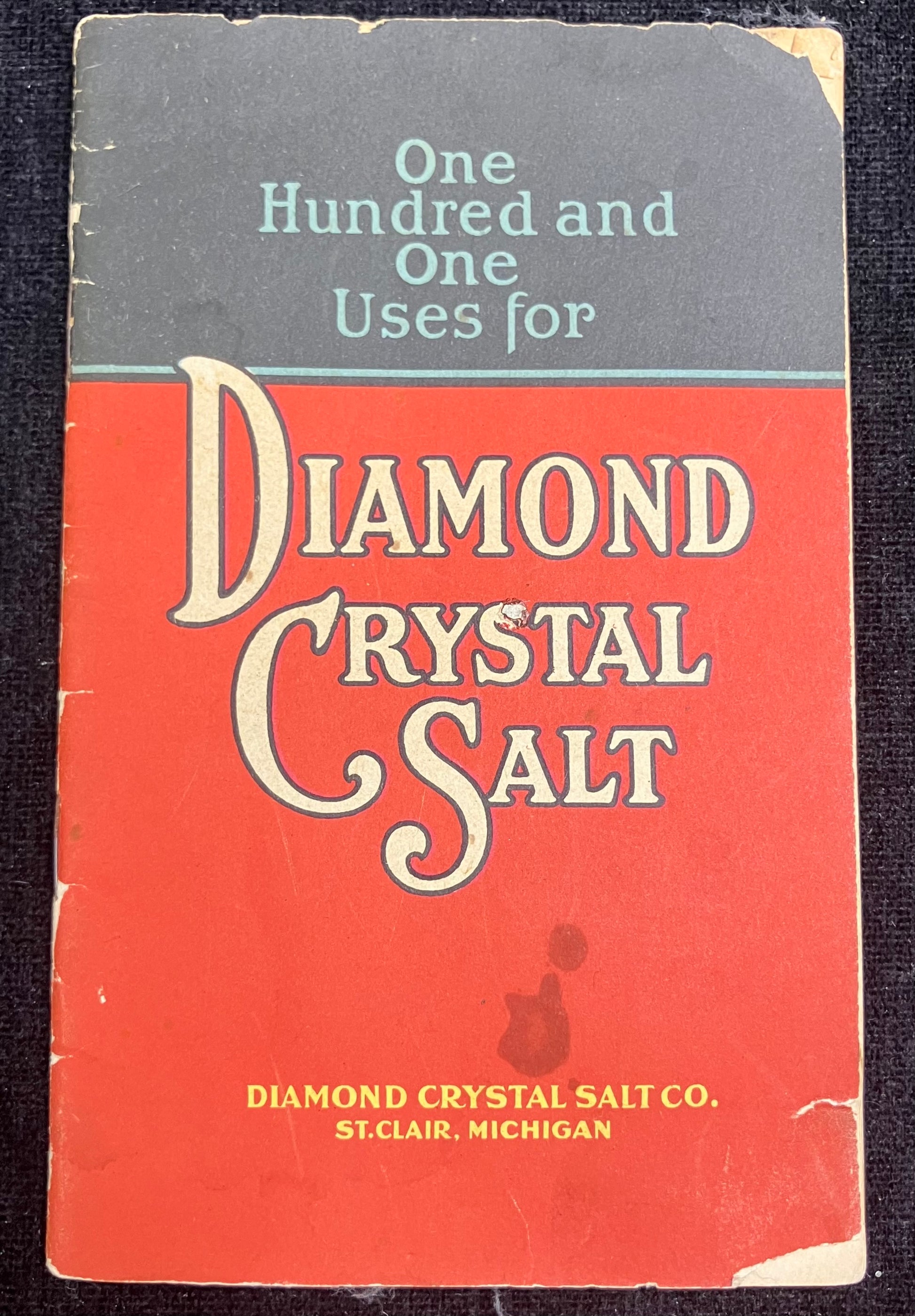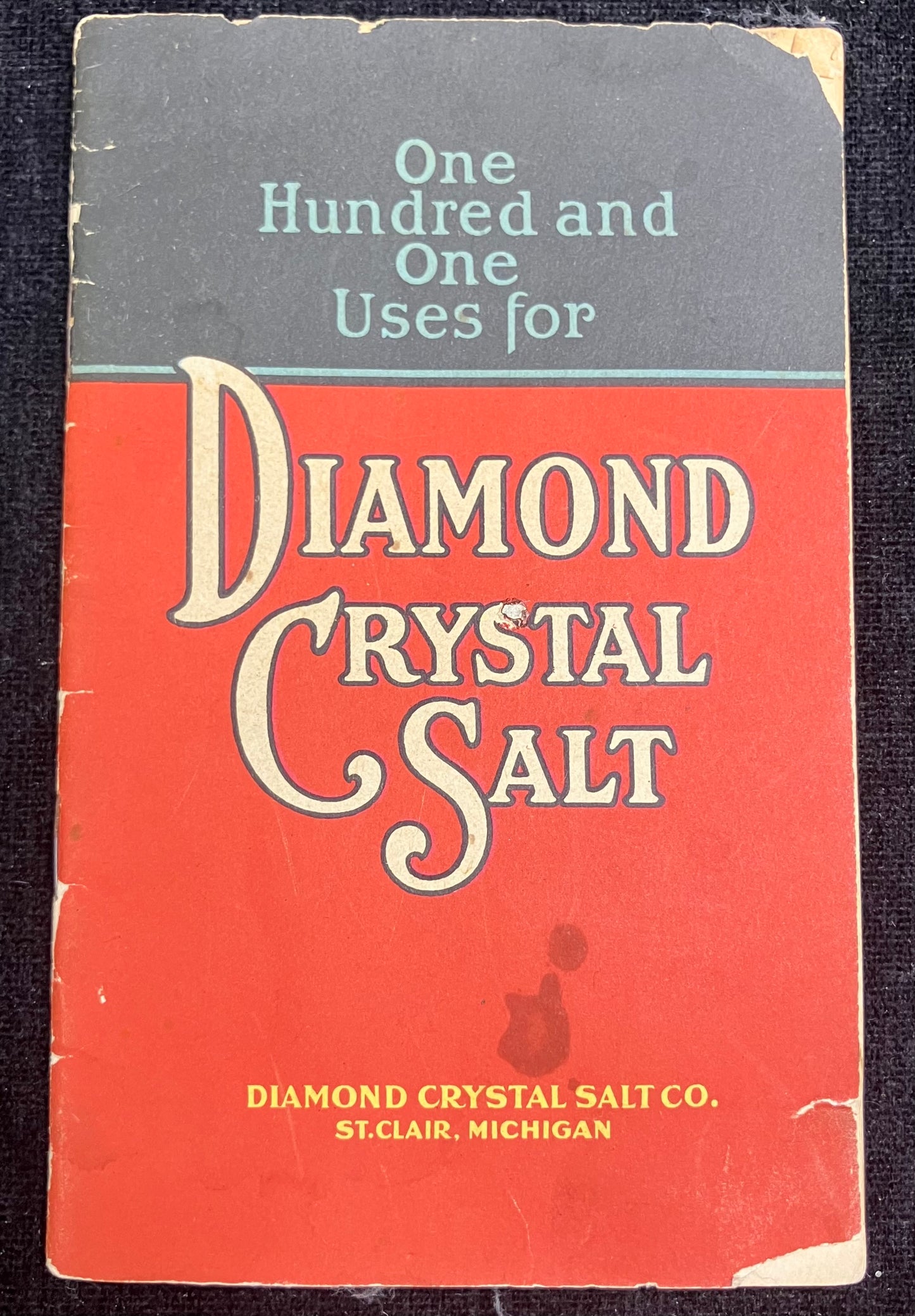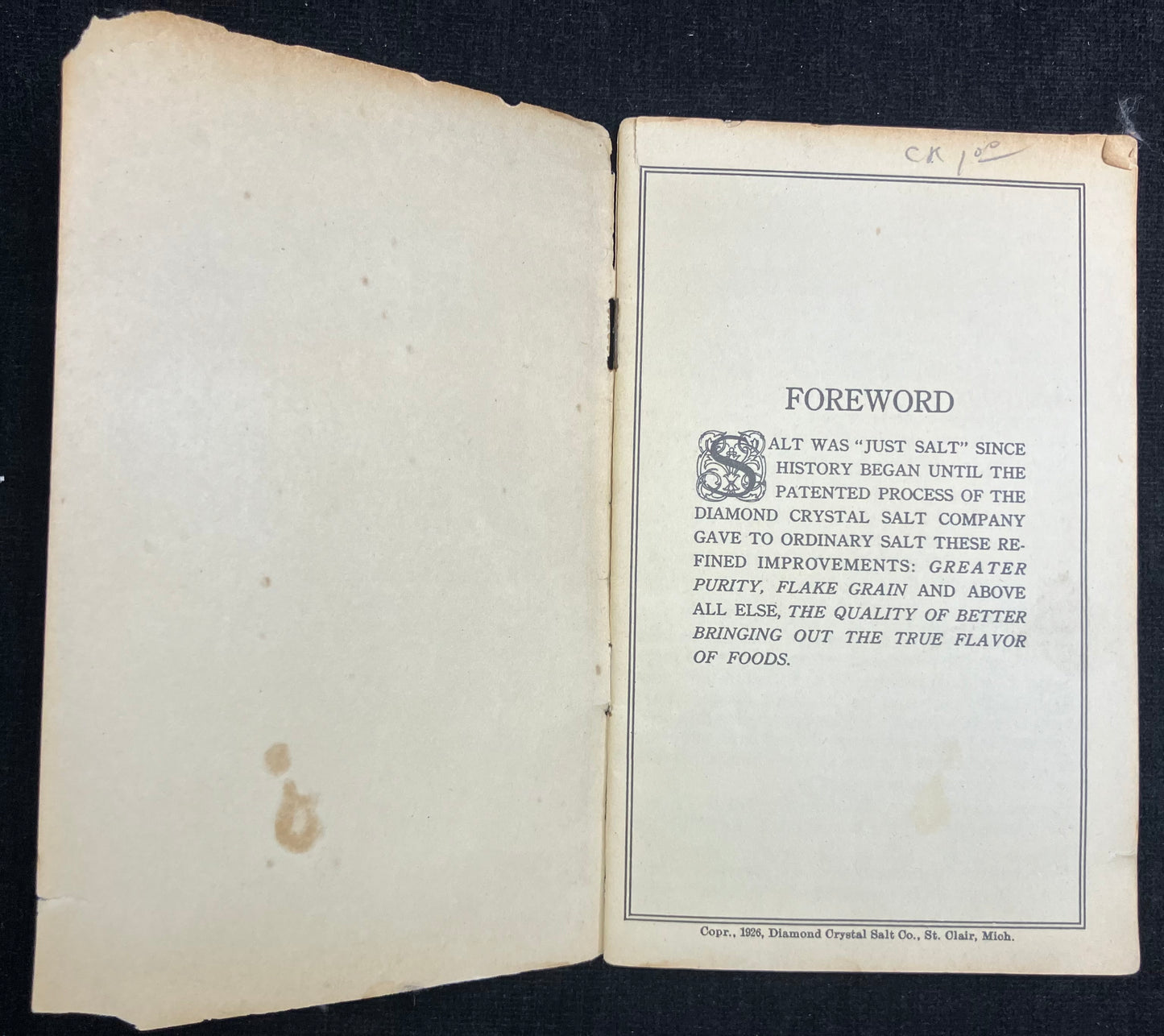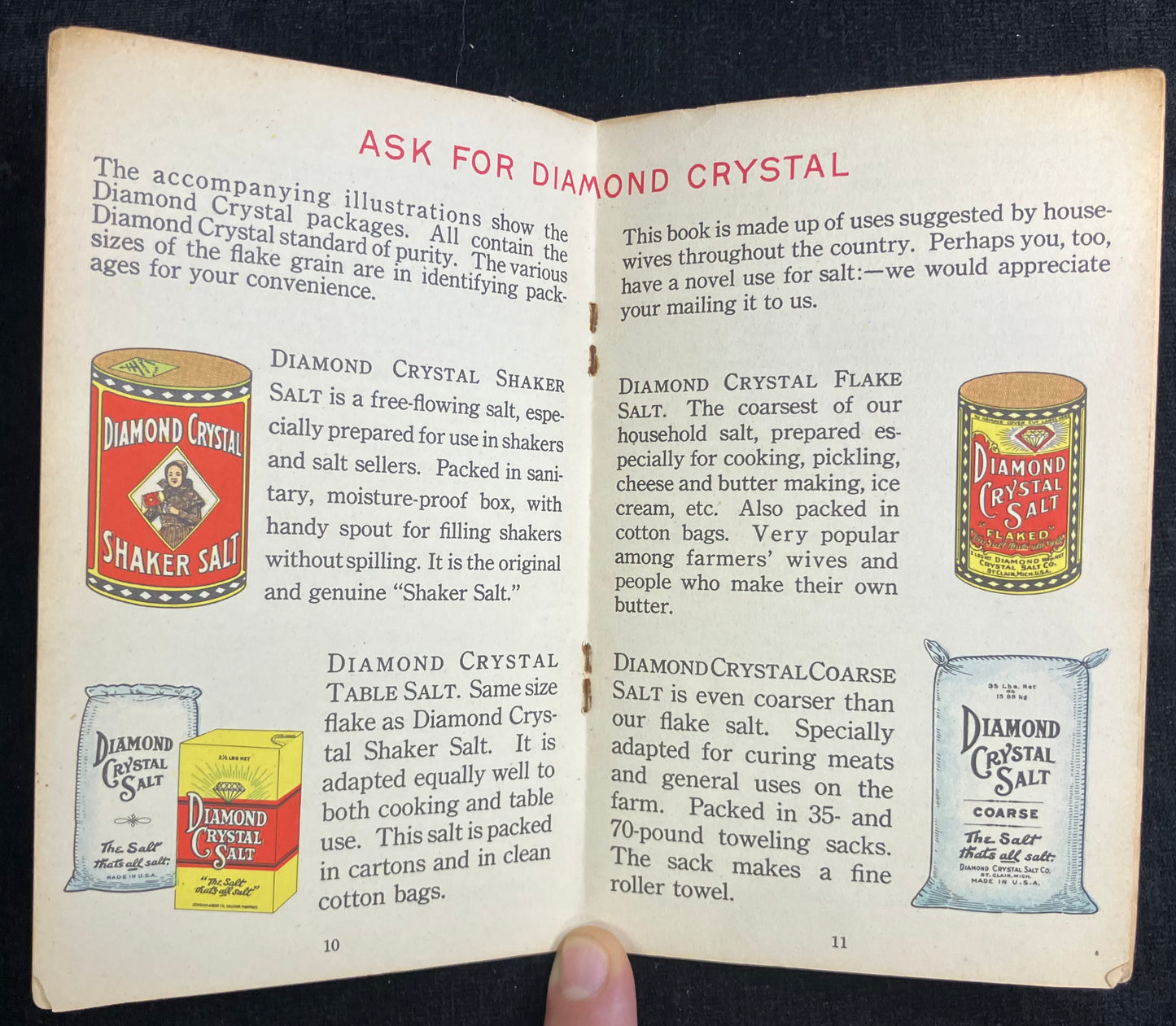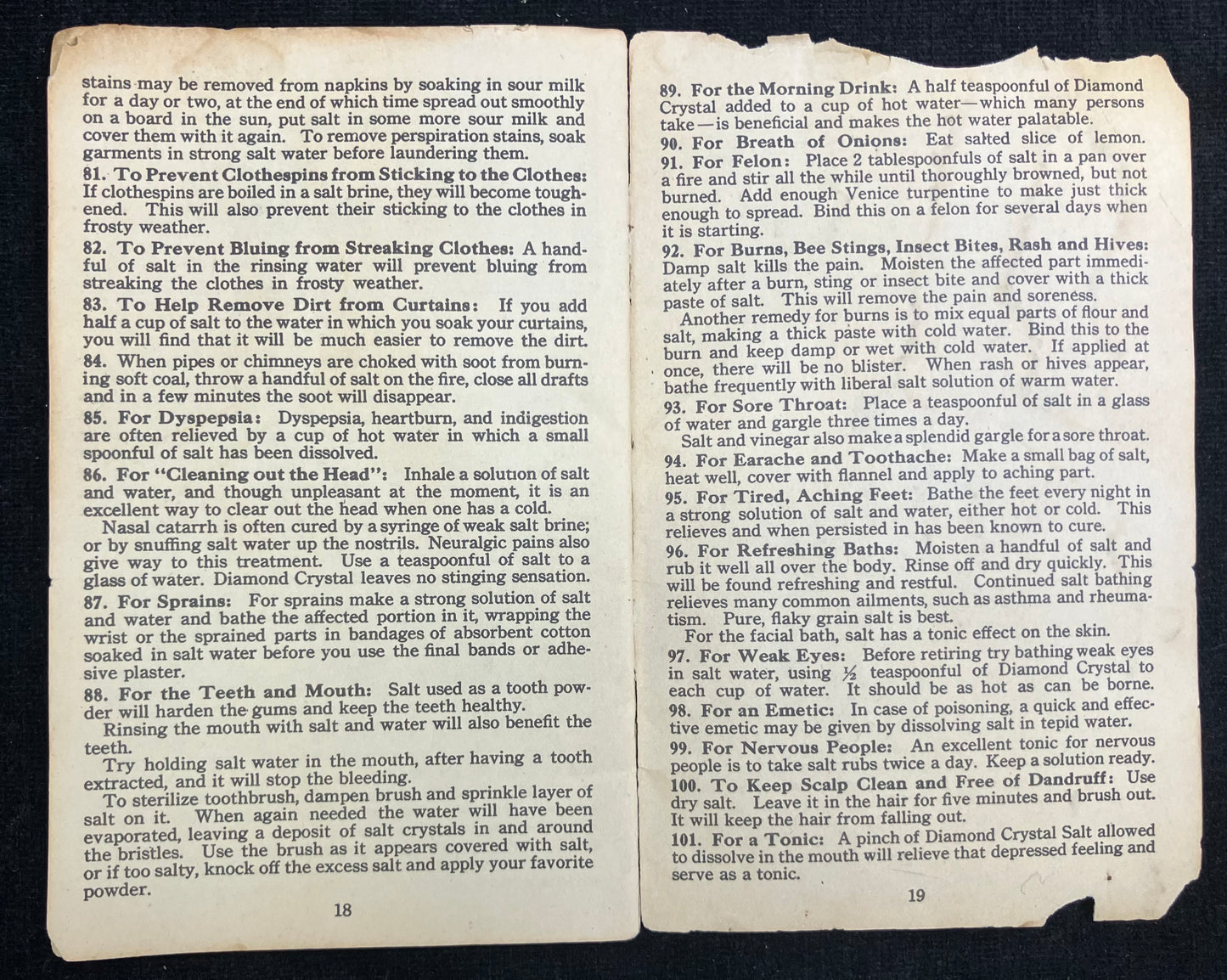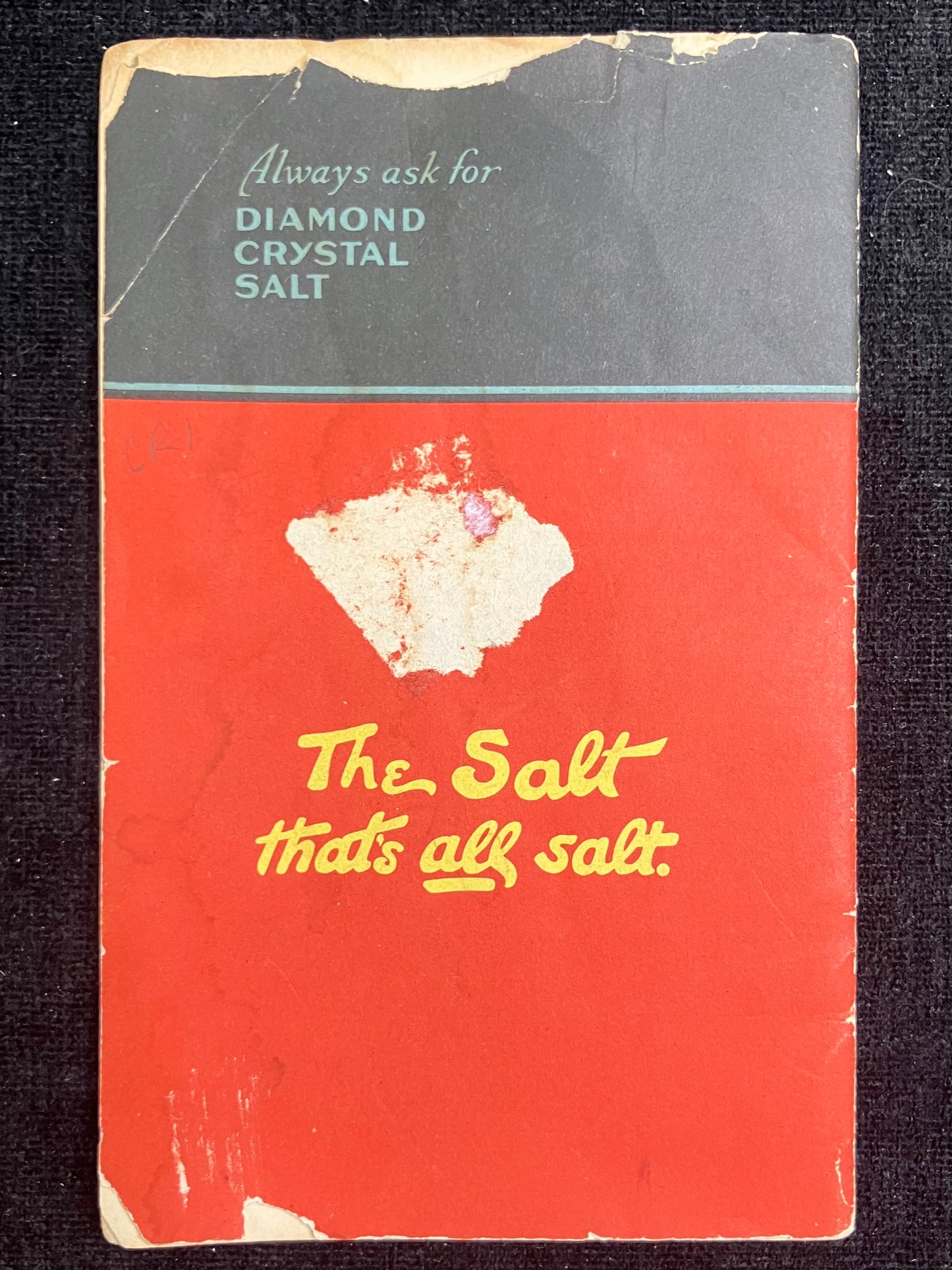A Hundred and One Uses for Salt: Salt Hacks #45 and #66
Share
Salt Hacks of the day:

Why it works:
Salt is a gently abrasive material and can scour stains from glass without scratching it. This is why a lamp chimney could appear to give "better light" after a light salt scrub, since any grease or soot stains no longer block or diffuse light.
Boiling glass slowly in water mimics a common technique called tempering, whereby glass is heated and then rapidly cooled to increase the material's physical strength (source). Glass molecules can also be strengthened by something called ion exchange -- putting glass in a hot bath of potassium or calcium salt. This replaces smaller ions with larger ones to increase internal stress and strength (source); however, this only happens at high temperatures. It is unclear whether boiling glass in salt water is entirely effective.

Why it matters:
Oil and kerosene lamps were a staple in homes beyond the invention of the light bulb for their bright light and minimal soot (source, source). Long-lasting, clean lamp glass was a priority for an elegant and sleek look. Remember that in addition to being homemakers, caregivers, chefs, and maids, women were often the home's interior designers tasked with making the house look perfect. This booklet markets to housewives, as seen in the picture, promising a quick and easy solution to the problem of dirty, fragile glass.
Have you ever tried boiling or rubbing glass with salt? Let us know.
Stay tuned for more salt hacks!

